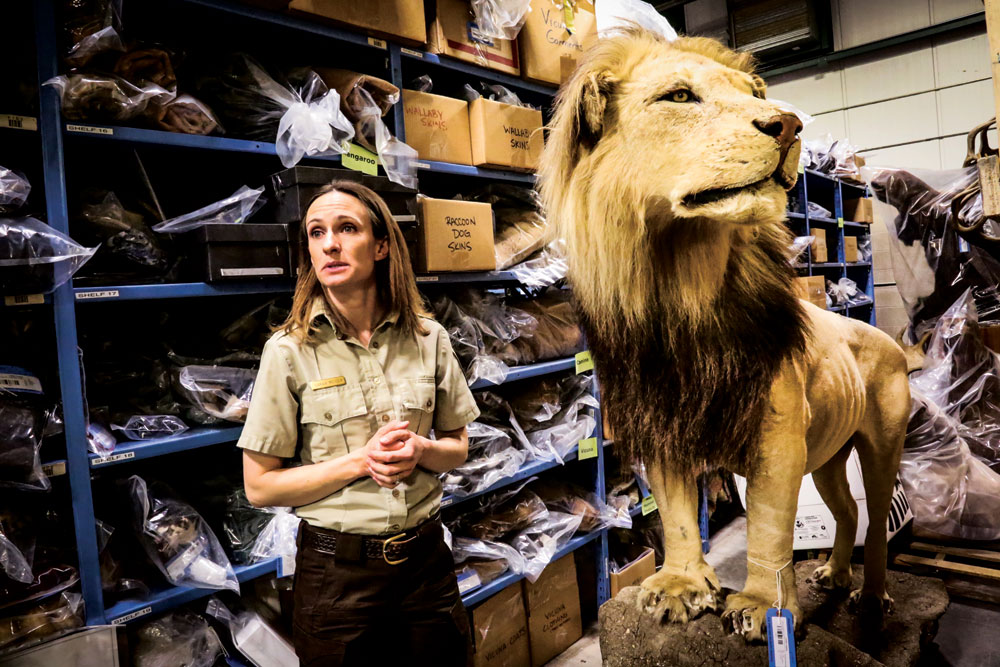
Education Specialist Sarah Metzer of the National Wildlife Property Repository says the illegal wildlife trade is one of the most lucrative criminal industries in the world, after drugs, counterfeiting, human trafficking and oil. Items that can be used for educational purposes are stored at the National Repository located at Rocky Mountain Arsenal National Wildlife Refuge.
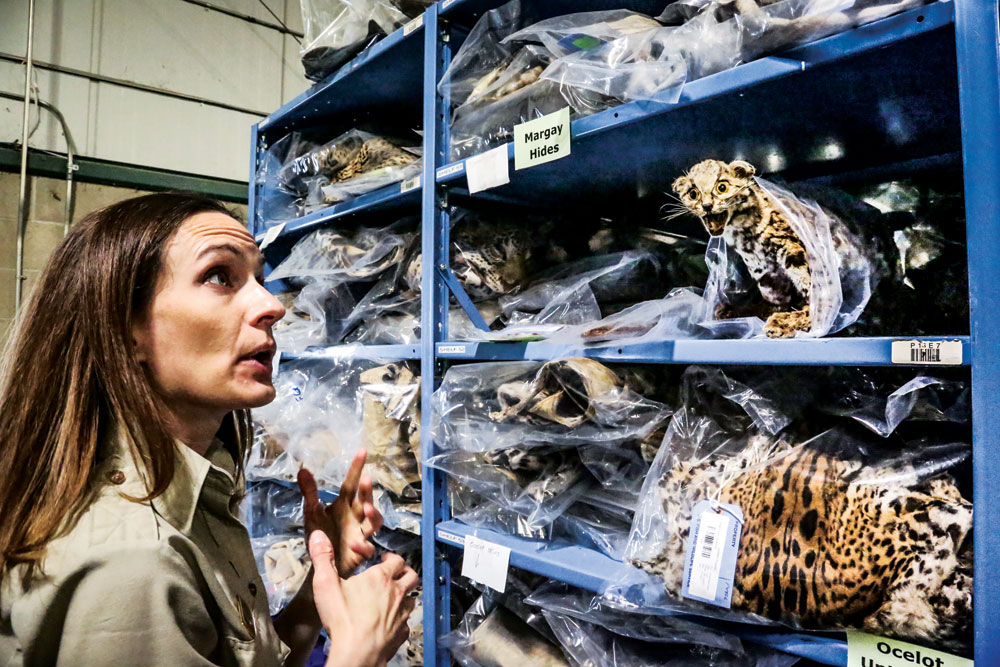
Nestled within the Rocky Mountain Arsenal that serves as a refuge for bison and other wildlife, this federal facility lends the contraband to educational facilities and researchers to help save these species.

Left: Moose heads are wrapped in plastic for dust and pest protection. Right: Rhinos face increasing pressure from poaching for their valuable horns. The heads pictured here have artificial horns.
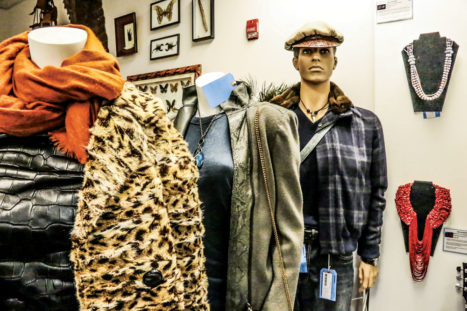
The illegally trafficked wildlife may take the form in fashion such as coats, belts, footwear, and hats. Necklaces made of endangered corals hang along the wall.
A sprawled-out polar bear skin with the head, floor-to-ceiling giraffe neck and head, stuffed rhino, life-like tigers and jaguars poised to jump—these are among the illegal imports seized at U.S. ports of entry. Seeing their faces is jolting and saddening. But Education Specialist Sarah Metzer, who has worked at the National Wildlife Property Repository at Rocky Mountain Arsenal for three years, looks at these remains and finds hope.
“I work here to harness the power that these pieces convey…they are ambassadors for their counterparts in the wild,” says Metzer. “One of the biggest misconceptions is that we’re just storing these items—but we’re actually matching them with recipients to promote education. We would like to permanently lend them out.”
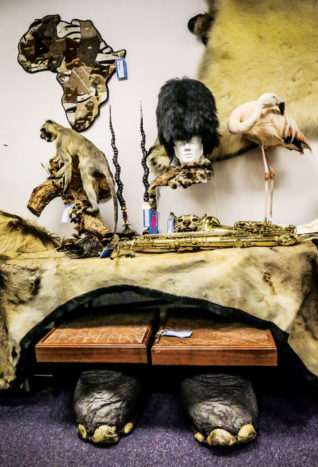
Decorative objects and tables made of elephant feet are among the goods seized at U.S. ports.
For Metzer, the artifacts in the Repository’s collection are not 1.3 million pieces of contraband so much as 1.3 million educational tools. “These are tactile teaching tools,” she says. “They can help people forge a stronger connection to a species.”
The nondescript 22,000-square-foot building at the Rocky Mountain Arsenal National Wildlife Refuge offers no clue to the rich array of wildlife remains catalogued and curated there by the U.S. Fish and Wildlife Service (USFWS).The Repository does not warehouse all the items confiscated in the U.S., only those that can be used to further conservation and education. Its mission is to inform the public about the illegal wildlife trade and share specimens with researchers for scientific studies. The warehouse teems with rows of carnivores’ skulls and skins, but also with boxes being packed for shipment. Tiger skins, sharkskin boots, leopard skulls, and turtle shells find new homes in zoos and educational institutions around the country, where they help communicate in a tangible way the dire need for conservation.
Most of these items found their way to Commerce City after being seized and forfeited at the end of a circuitous route, having crossed multiple international boundaries. Some items had dubious or absent paper trails and were confiscated by customs agents at ports of entry. Others were identified as the product of an illegally trafficked endangered species. Unquestioning travelers purchased some as souvenirs. In other instances, wholesale shipments were intercepted, yielding large quantities of purses, traditional medicines and items made of ivory, shark fins, and other wildlife parts. These now sit on Repository shelves rather than store shelves, having already served as evidence in legal proceedings against a buyer or importer.
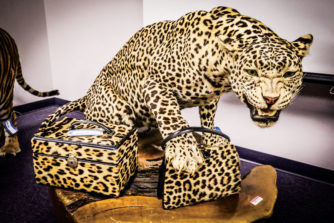
An Asian leopard together with a case and purse made of jaguar and leopard skin.
Metzer, who has a background in zoology, explains that the Convention on International Trade in Endangered Species (CITES), to which the U.S. is a signatory, is one factor that determines whether an item is legal or not. According to the CITES website, the international agreement “accords varying degrees of protection to more than 35,000 species of animals and plants, whether they are traded as live specimens, fur coats or dried herbs.”
International and domestic laws regulating wildlife trade seek to protect individual species—but they also seek to protect biodiversity to ensure that future generations will, for example, be able to both see elephants in the wild and investigate medicinal properties of a particular type of spider. Metzer talks about the careful balance between present-day uses and species viability—and how illegally obtained items upset that balance. “At that point, use of the species becomes unsustainable—it is just exploitation.”

Left: A tiger fetus, shelved next to a long row of tiger heads, reveals the breadth of wildlife trafficking. Right: Even small wild cats such as this South American margay are illegally traded.
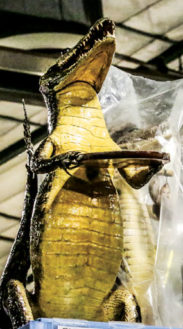
A stuffed caiman holding a tray was likely produced as a tourist souvenir.
The Repository is closed to the public, but educators, community, conservation and wildlife groups may schedule private tours. Children under the age of 12 are not permitted. A distance learning program allows those outside of the Denver area to arrange educational sessions with educators like Metzer. To learn more or request a tour, email nwpr@fws.gov. If your travel plans take you overseas, educate yourself before leaving so you know what items you can and cannot bring back to the U.S.: https://www.fws.gov/international/travel-and-trade/index.html.
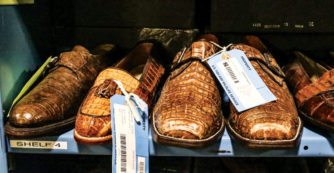
The Repository has over 1600 pairs of shoes from species like caiman, a crocodilian, shown here.


0 Comments